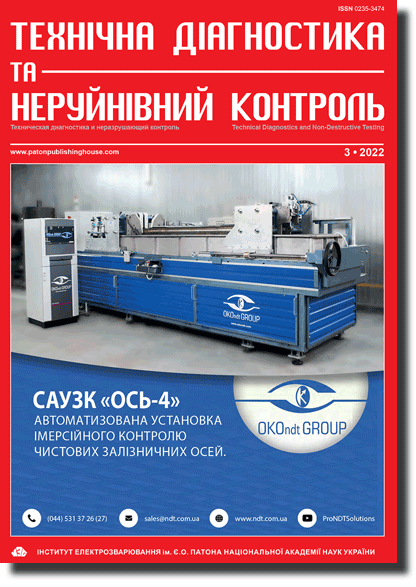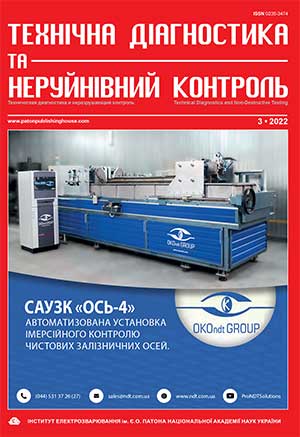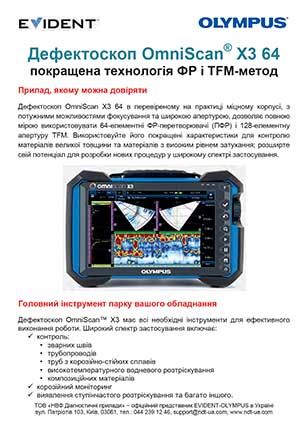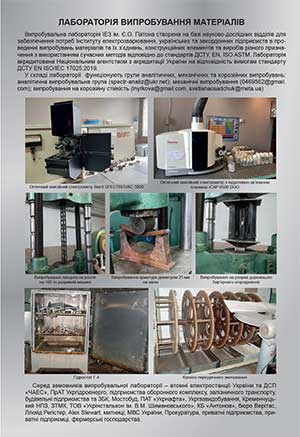| 2022 №03 (06) |
DOI of Article 10.37434/tdnk2022.03.01 |
2022 №03 (02) |
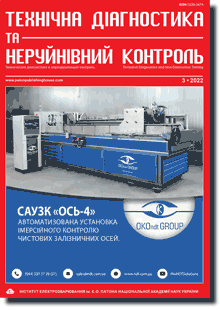
"Tekhnichna Diahnostyka ta Neruinivnyi Kontrol" (Technical Diagnostics and Non-Destructive Testing) #3, 2022, pp. 3-11
Evaluation of brittle fracture resistance of WWER-1000 reactor enclosure during long-term service, taking into account the residual technological stresses
O.V. Makhnenko, S.M. Kandala
E.O. Paton Electric Welding Institute of NASU. 11 Kazymyr Malevych str., 03150, Kyiv, Ukraine. E-mail: office@paton.kiev.ua
The need to take into account the residual technological stresses (RTS) in the material of the enclosure of reactor internals (RI) of NPP power units of WWER-1000 type, resulting from technological processes of welding and postweld heat treatment at extension of safe service period beyond the design life is substantiated. The influence of RTS on the stress-strain state of the enclosure, as well as brittle fracture resistance (BFR) of the material in service was determined. It is shown that an essential redistribution of axial and hoop stresses in the enclosure is observed due to allowing for RTS, namely of the zone of high tensile stresses, which under normal operation conditions (NOC) move into the internal volume of the enclosure from its outer surface, while the area of these zone becomes larger. Such a redistribution of stresses has an essential influence on the level of stress intensity coefficient on the contour of the cracklike defects. The most critical areas, in terms of brittle strength, form in thei nner volume of the enclosure, whereas the dimensions of subsurface elliptical crack, which is postulated, can be increased due to widening of the tensile stress zone, thus promoting greater conservatism of BFR assessment. Moreover, taking RTS into account allows a significant lowering of conservatism at assessment of enclosure BFR under NOC for surface semielliptic cracks, located on the enclosure outer surface, where residual compressive stresses arise during manufacture. Obtained results allow more precise determination of enclosure zones, prone to brittle fracture of the material under NOC that is important for improvement of the approaches to determination of RI of WWER-1000 type reactor. Ref. 9, Tabl. 2, Fig. 9.
Keywords: WWER-1000, reactor internals, enclosure, residual technological stresses, brittle fracture resistance, postulated cracks, stress intensity coefficient, normal operating conditions
Received: 30.05.2022
References
1. Pištora, V., Švrček, M., Ferko, P., Mirzov, I. (2018). Fracture Mechanical Assessment of VVER Reactor Internals. Proceedings of the ASME. 2018 https://doi.org/10.1115/PVP2018-845892. Oryniak, A.I. (2021) Methods of calculation of stress intensity coefficient taking into account geometrical nonlinearity and arbitrary shape of crack. In: Syn. of Thesis for Cand. of Tech. Sci. Degree, 05.02.09, Kyiv [in Ukrainian].
3. Makhnenko, O., Kandala, S., Basistyuk, N. (2021) Influence of the heat transfer coefficient on the level of residual stress after heat treatment of the VVER-1000 reactor baffle. Mechanics and Advanced Technologies, 5(2), 254-259. https://doi.org/10.20535/2521-1943.2021.5.2.245074
4. PM-Т.0.03.333-15. Standard program for assessing of technical condition and extension of service life of WWER-1000 internals.
5. Makhnenko, O.V., Kandala, S.M., Savytska, O.M. (2021) Comparative analysis of models of irradiation-induced swelling for calculated determination of SSS of WWER-1000 baffle. Problemy Mitsnosti, 5, 13-22 [in Ukrainian].
6. (2013) Guidelines for Integrity and Lifetime Assessment of Components and Piping in WWER Nuclear Power Plants (VERLIFE). Vienna: Int. At. Energy Agency.
7. Chirkov, A.Yu., Kharchenko, V.V. (2020) Special features of computational assessment of the change in shape of WWER- 1000 reactor core baffle in view of irradiation-induced swelling. Strength Mater., 52, 339-352. https://doi.org/10.1007/s11223-020-00184-9
8. PNAE G-7-002-86 (1989): Norms for strength calculation of equipment and pipelines of nuclear power plants. Moscow, Energoatomizdat [in Russian].
9. (2012) RD ЕО 1.1.2.05.0330-2012: Guidelines for strength calculation of equipment and pipelines of RBMK, WWER and EPG reactor plants at the stage of service beyond the design life.
Advertising in this issue:
The cost of subscription/purchase order journals or individual articles
| Journal/Currency | Annual Set | 1 issue printed |
1 issue |
one article |
| TPWJ/USD | 384 $ | 32 $ | 26 $ | 13 $ |
| TPWJ/EUR | 348 € | 29 € | 24 € | 12 € |
| TPWJ/UAH | 7200 UAH | 600 UAH | 600 UAH | 280 UAH |
| AS/UAH | 1800 UAH | 300 UAH | 300 UAH | 150 UAH |
| AS/USD | 192 $ | 32 $ | 26 $ | 13 $ |
| AS/EUR | 180 € | 30 € | 25 € | 12 € |
| SEM/UAH | 1200 UAH | 300 UAH | 300 UAH | 150 UAH |
| SEM/USD | 128 $ | 32 $ | 26 $ | 13 $ |
| SEM/EUR | 120 € | 30 € | 25 € | 12 € |
| TDNK/UAH | 1200 UAH | 300 UAH | 300 UAH | 150 UAH |
| TDNK/USD | 128 $ | 32 $ | 26 $ | 13 $ |
| TDNK/EUR | 120 € | 30 € | 25 € | 15 € |
AS = «Automatic Welding» - 6 issues per year;
TPWJ = «PATON WELDING JOURNAL» - 12 issues per year;
SEM = «Electrometallurgy Today» - 4 issues per year;
TDNK = «Technical Diagnostics and Non-Destructive Testing» - 4 issues per year.





